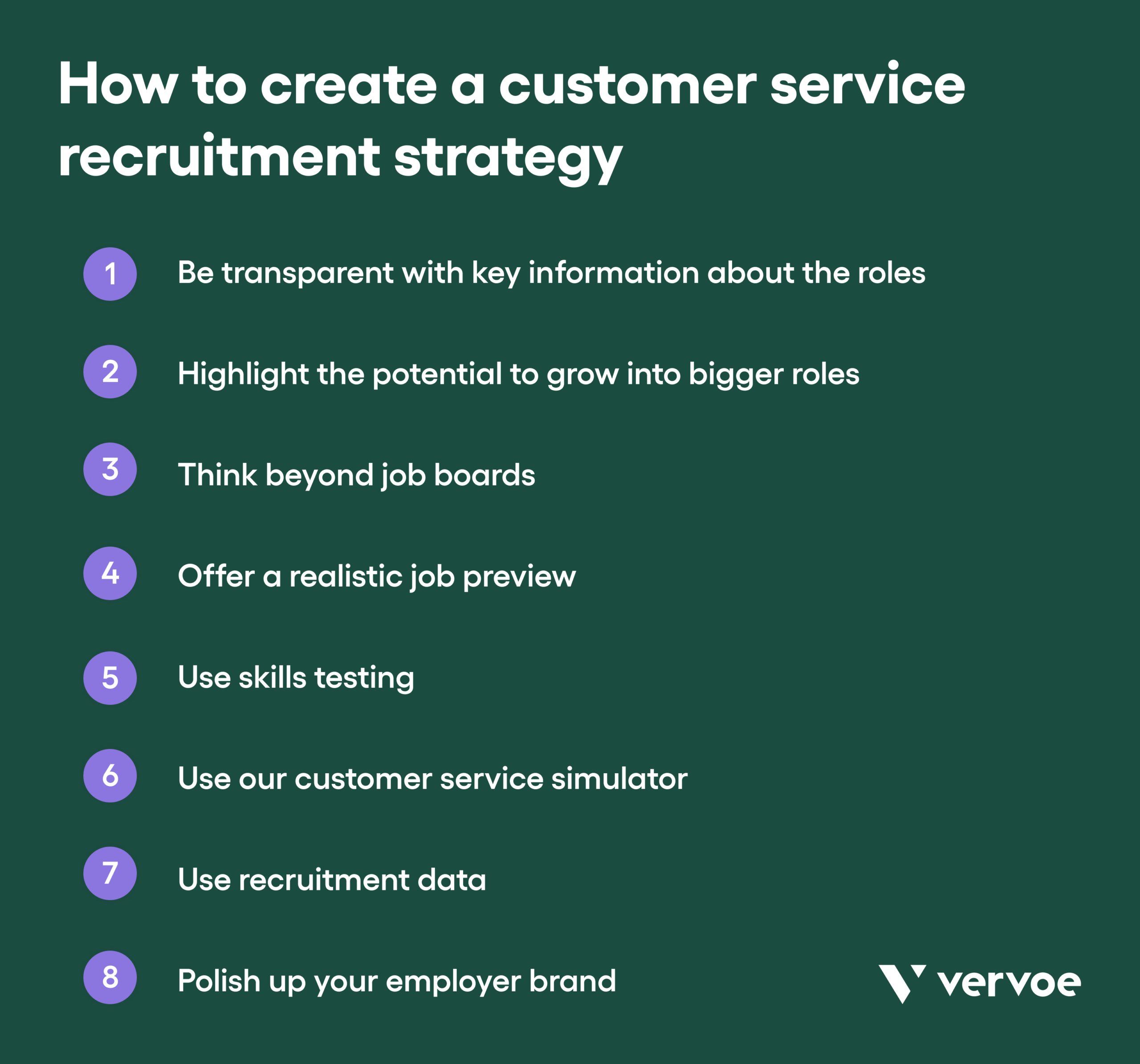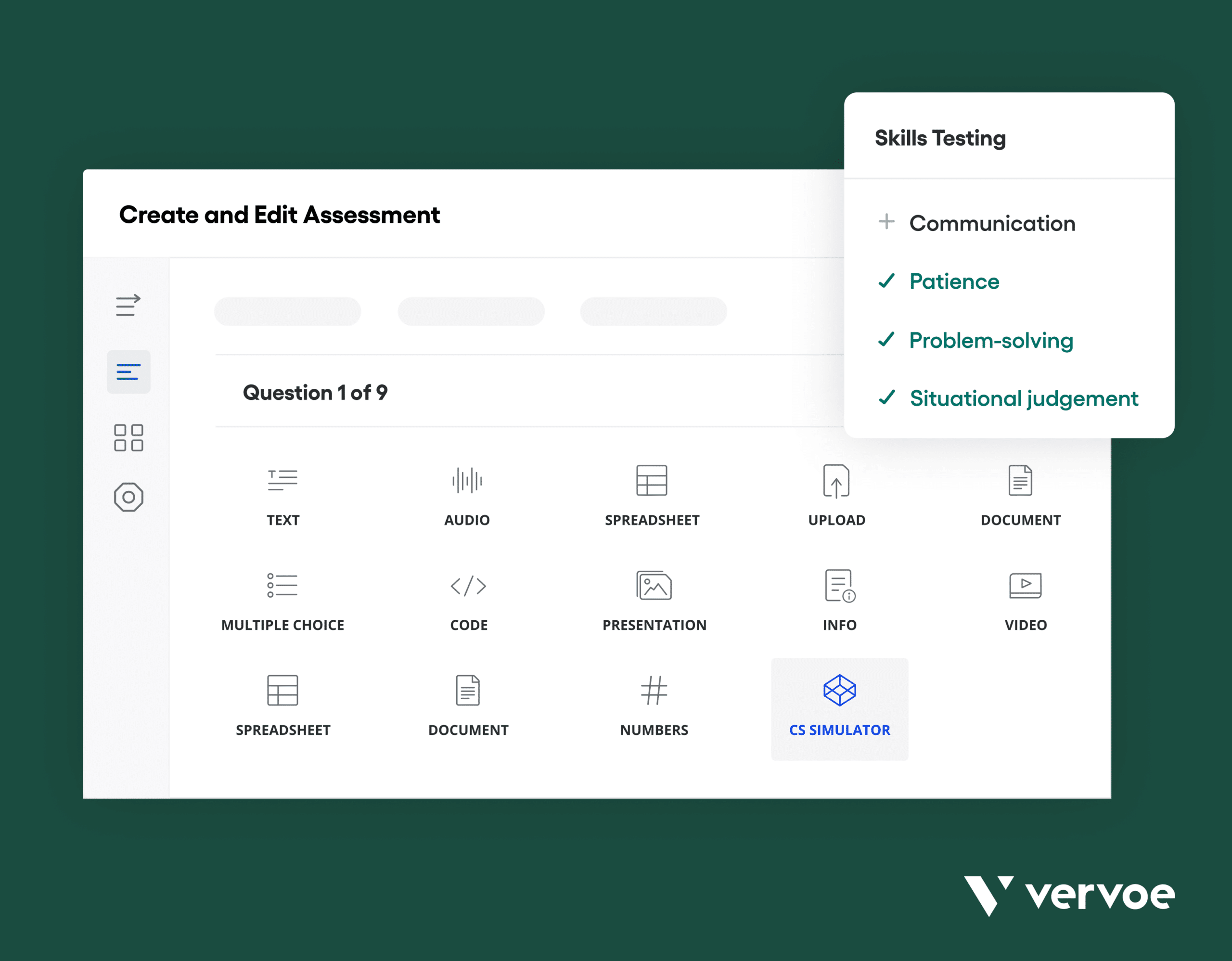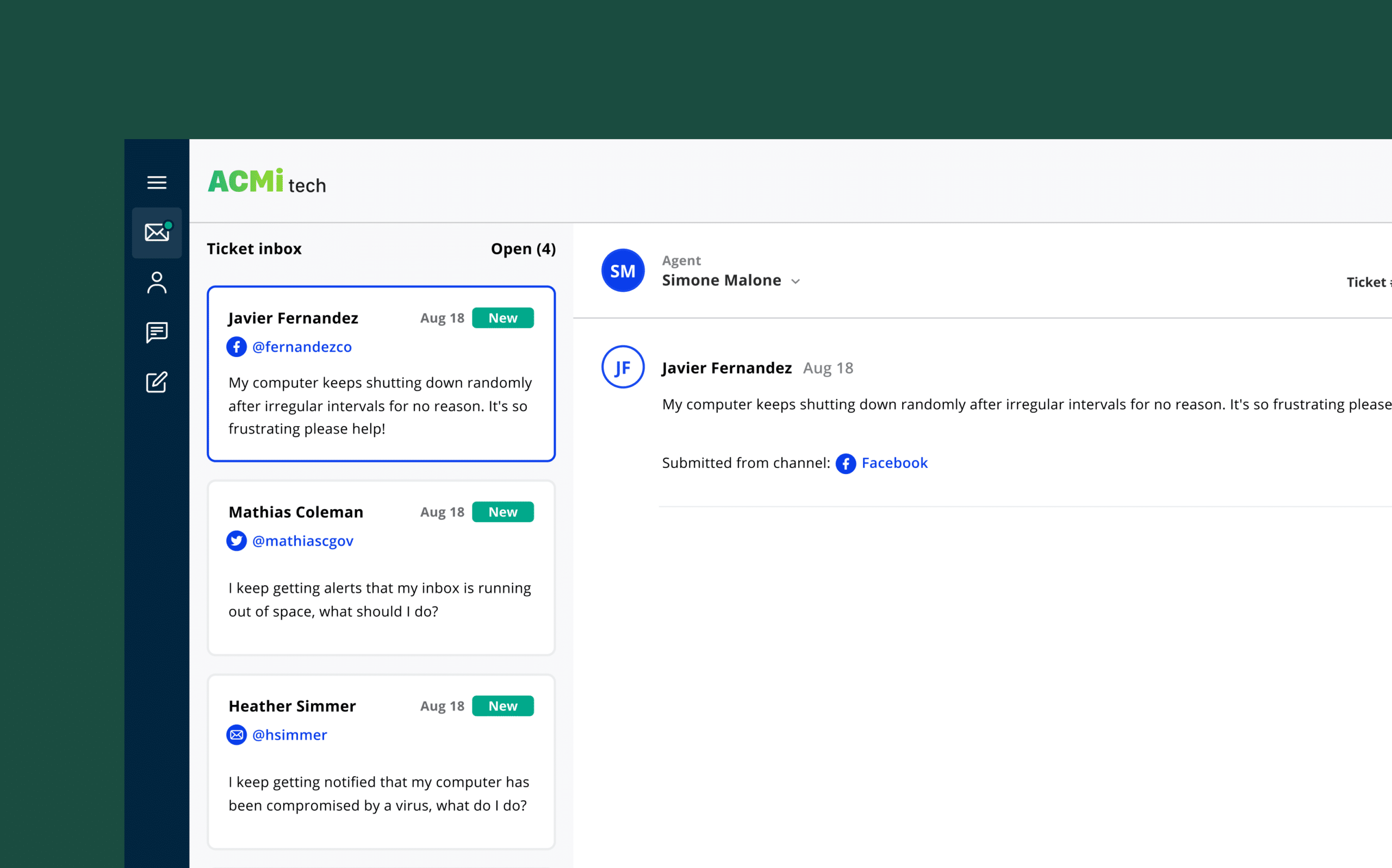Technology has enabled consumers to resolve many issues online using self-help modules, or over the phone using prompts. However, there are more complex issues that technology can’t resolve — things like customer sales, service, loyalty, and refunds. For these complicated inquiries, only the touch of a great customer service professional will do.
Demand for customer service employees is expected to grow over the next decade. Turnover in these positions can be extremely high — as much as 50% annually. As companies recognize the importance of customer retention, customer relationships, and overall brand experience, customer service will continue to be a vital business function.
To compete for the best customer service employees, you need a candidate experience to match. In this guide, we’ll teach you how to find the best candidates and design a hiring process that brings great customer service candidates to your company.
Recruiting customer service representatives: where to start
Customer service representatives are among the most valuable employees in an organization. Consider some of these stats from a Microsoft survey on the state of customer service:
- 96% of respondents say customer service is important in their choice of loyalty to a brand
- 56% of respondents say that they would stop doing business based on poor customer service
- 30% of respondents say they considered interacting with “a knowledgeable and friendly agent” to be the most important aspect of a good customer service experience
Recruiting customer service representatives can be perenially challenging, especially with the industry’s high turnover rate. Whether you want to expand your team of call center agents or hire a customer service manager, you need to have an understanding of which key customer service skills and characteristics to look out for.
But how do you even know where to start, when there are so many things to keep in mind?
“It’s essential to define your customer service values before you start hiring. Sit down with the rest of your team and ask: What emotions or ideas do you want customers to take with them after interacting with your CS staff?,” said Jeffrey M. Gabriel, co-founder of Saw.com.
Before you dive into the hiring process, check out our guides for defining the skills needed for customer service roles:
- 18 Key Customer Service Skills and How to Hire For Them
- 8 Vital Customer Service Hard Skills Your Representatives Need
- 10 Key Customer Service Soft Skills Your Team Should Master
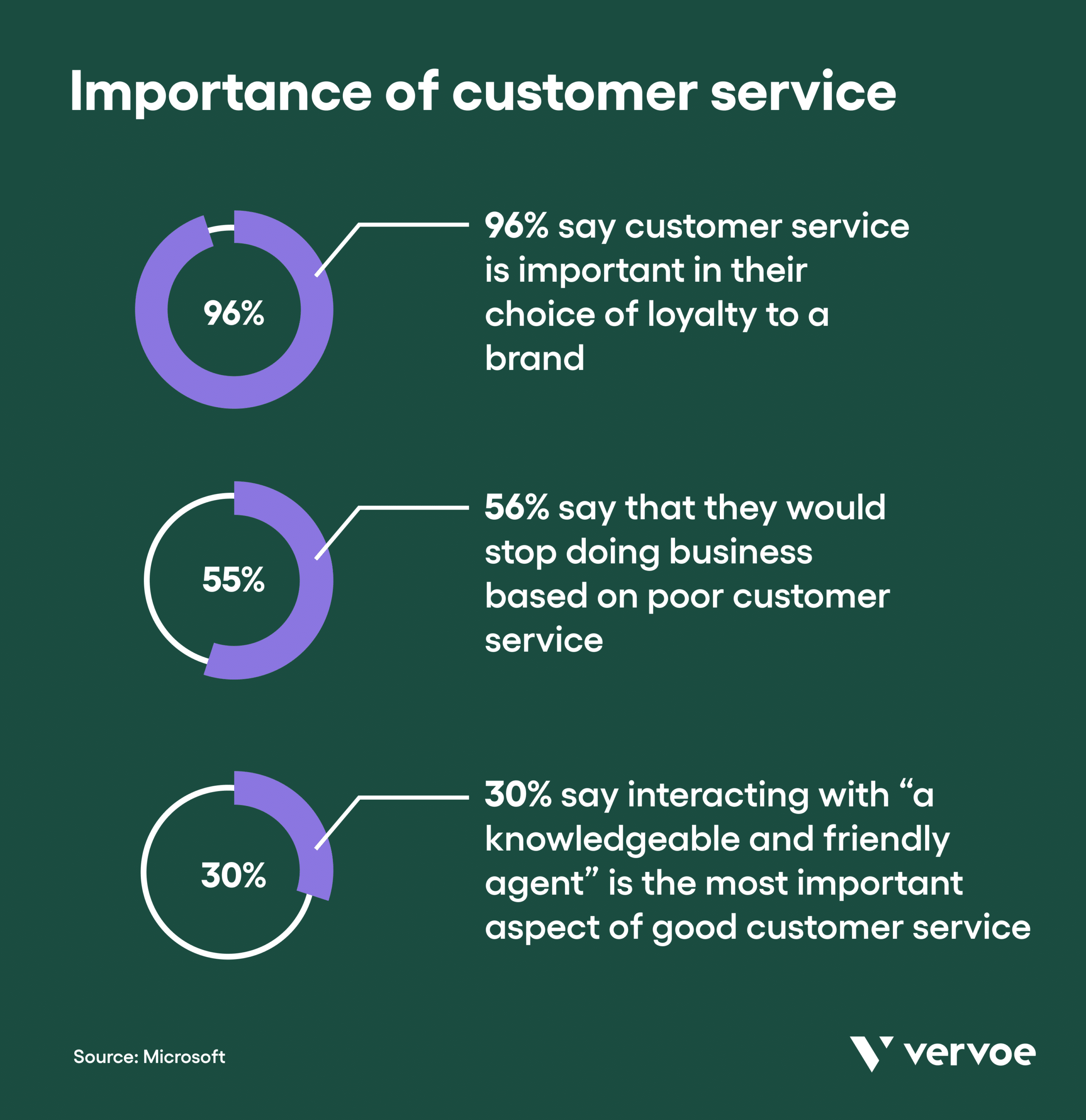
What is a customer service recruitment strategy?
A customer service recruitment strategy is an approach to recruiting customer service professionals that leads to high candidate retention, well-qualified applications, and ultimately, new hire retention and satisfaction in the customer service field.
By creating a customer service recruitment strategy, companies can identify:
- Resources needed during the hiring process
- Must-have and nice-to-have skills in a customer service position
- Steps in the hiring process that help identify top candidates
- A compensation package that seals the deal
The customer service recruitment strategy helps the hiring team and leadership align on how candidates will be screened, vetted, hired, and onboarded. This strategy can help lower recruiting costs, shorten the time to hire and help the organization bring on the right employee the first time — avoiding the costs of a bad hire.
[Read more: Free Recruitment Guides For Selection & Hiring Online]
Likewise, a customer service recruitment strategy has a direct impact on broader business results.
“Businesses can grow revenues between 4% and 8% above their market when they prioritize better customer service experiences.”
Bain & Company
Bottom line: customer service is the backbone of your business. A positive customer experience has a direct impact on the organization’s revenue and growth. Therefore, it’s critical to establish a thoughtful recruitment strategy to find the right customer service employees.
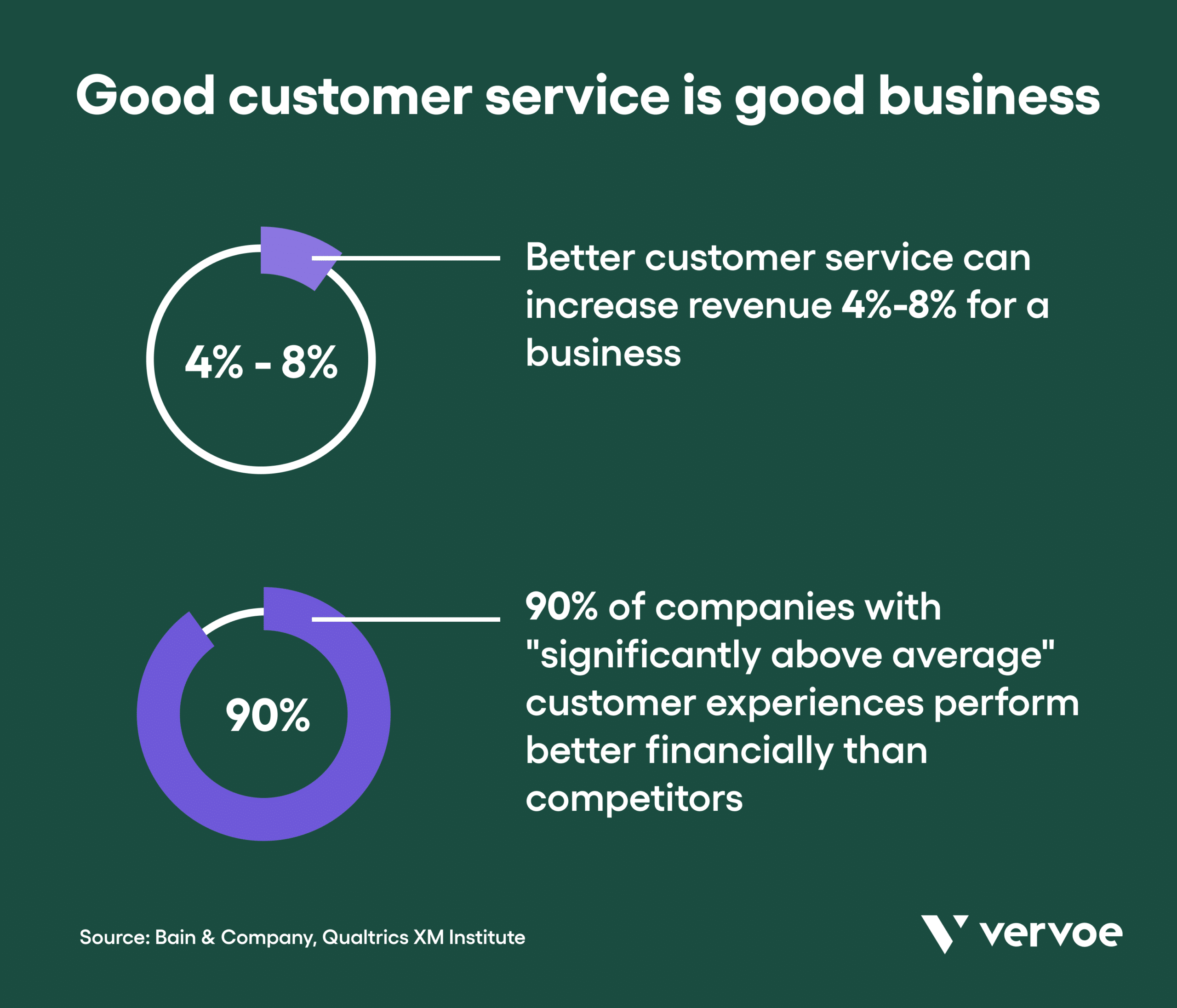
How to create a customer service recruitment strategy
Before you dive into these eight steps for creating a customer service recruitment strategy, be clear about the skills and experience that will make each member of your customer service team successful.
“The most important thing to do when looking to expand or create your customer service department is to listen to what your existing customer service department needs,” Nick Drewe, CEO of Wethrift, one of the world’s largest e-commerce sales and coupon platforms, says. “Whether that is you on your own or 1,000 employees, listen.”
Defining the goals you have for your customer service team will make it easy to define roles, provide key information about each role, identify the right hiring platforms, and screen candidates for the skill sets needed for success.
Here are eight important considerations to help you create a customer service recruitment strategy.
1. Be transparent with key information about the roles
Candidates are extremely loyal to companies that are transparent about their mission, values — and hiring process. Transparency is a key piece of a great candidate experience, and this is especially true for customer service roles.
[Read more: 6 Expert Steps To A Great Candidate Experience]
Make setting clear expectations a central tenet of your customer service recruitment strategy. This starts by writing job descriptions that are clear and open about what the position requires, the challenges, and the core competencies someone needs to be successful. Include details about the benefits, training and advancement opportunities, diversity and inclusion efforts, company culture, and salary range.
Likewise, provide instructions at the beginning of the application that indicate how many questions someone will have to answer, the documents they need to submit (CV, cover letter, writing sample, etc.). Check out this recruitment guide for hiring a customer success specialist for a great example of how to bring clarity to your hiring process.
2. Highlight the potential to grow into bigger roles
There’s a reason why customer service roles tend to have high turnover: qualified candidates simply don’t see the potential room for growth.
“Many people view customer service as a dead-end job. But that simply isn’t true,” Shaunak Amin, the co-founder and CEO of SnackMagic, says. “To attract top talent to your recruitment efforts, highlight the growth opportunities in the job listing. And during the hiring process, let candidates know what kinds of specialized training and promotions are available within your organization.”
Customer service skills can lend themselves to all kinds of different leadership roles. In your recruitment process, share how you see a customer service role growing into a marketing, sales, HR, or more advanced customer engagement position. Talk about the training and development opportunities that your business offers, as well as the range of skills someone can learn while in this role.
3. Think beyond job boards
Job boards are one way to reach candidates. But, they’re also an easy way to get lost in the crowd.
Get creative in how you advertise customer service positions. Be selective about the job boards you use: try customer service-specific sites, such as Customer Service Crossing and Support Driven.
Consider adding nontraditional outreach channels — like social media — to your recruitment strategy.
“Social media platforms like Facebook and Instagram have higher response times than any [other] platform,” Jared Stern, founder and CEO of Uplift Legal Funding says. “There are various formats to put out your ads as against a mere poster. It can be a story or even video format, which can be very advantageous.”
LinkedIn is another good source for recruiting a customer service representative. Ideally, you’ll use your job posting to target individuals who are genuinely interested in a career in customer service, rather than simply looking for an interim job.
4. Offer a realistic job preview
Once you’ve identified where you want to post your job description, it’s time to focus on candidate screening.
“The best way to test how good they will be at the job is to get them to do the job,” Anthony Martin, CEO and founder of Choice Mutual says. “Send them a bunch of negative and positive complaints after you strip away all identifying information to see how they respond. Your customer service employee needs to have a lot of patience and compassion with feedback, no matter what kind.”
A realistic job preview (RJP) can help determine whether or not a candidate has excellent customer service skills. An RJP is a recruiting tool to provide a job candidate with a realistic view of what the job entails — both the good and bad aspects of the proposed position.
[Read more: What a Realistic Job Preview Looks Like and How To Create One]
While an RJP is useful to the company as an assessment tool, it’s typically more of an opportunity for the candidate to discern whether this position is a good fit for them. Again, this is an important part of the hiring process, as it helps candidates who really aren’t interested in customer service self-select out of the next stage.
5. Use skills testing
Customer service requires a combination of hard and soft skills. Communication, for instance, is an equally important customer service skill as using CRM software.
Vervoe assessments test both on the job and soft skills together in one simple and engaging assessment. Questions can be designed to assess things like patience, problem-solving skills, and situational judgment.
6. Use our customer service simulator
Recently, we launched Vervoe’s Customer Service Simulator, designed to immerse candidates in scenarios mimicking real-life customer interactions.
With real tickets, time limits, an extensive knowledge base, and rich customer profiles watch candidates solve customer problems right before your eyes. These simulations cover three core use cases: retail and eCommerce, tech support, and subscriptions and services. Watch the tickets and knowledge bases completely adapt.
The Customer Service Simulator allows you to see how potential candidates answer any customer questions, record and log feedback from customers, take orders and payments and update customer accounts.
[Learn more: New: Introducing The Vervoe Customer Service Simulator]
Candidates can also see if this role is something they’re equipped to take on, allowing them to better picture what it would be like to work for your company.
7. Use recruitment data
Recruitment data can help inform your recruitment strategy and set expectations. Recruitment data shows you whether or not your strategy is working, and where to adjust your hiring process accordingly.
Start using data early in the process, recommends digital marketing expert David Farkas, founder and CEO of The Upper Ranks. “To get the most out of your data, you first need to know what you want. Analyze your present personnel and seek a few standouts who can help your company succeed.
“Make a list of the abilities and attributes that enable them to be successful in their work. [Then] Make an ideal applicant persona using the information you’ve gathered.”
Keep track of performance data throughout your hiring process and well after your onboarding. Recruitment data can tell you where there may be a flaw in your strategy: whether the job description is too vague, if you’re not reaching the right job boards, or that your skill assessments are too complex.
8. Polish up your employer brand
Finally, make sure your employer brand really shines.
“I like to use video content whenever we are hiring for any position that includes testimonials from current employees,” Gergo Vari CEO of Lensa says. “This is an effective way of showing the candidate what it’s like to be part of our company before they even apply.”
Great content can include stories about the experiences your customer service specialists have had, including rewarding moments, opportunities for advancement, and connections with customers. Talk about your company’s mission, core values, and culture. Job seekers should be able to picture life at your company with very little effort.
And, of course, talk about compensation. “An excellent compensation package with a good deal of transparency is a good employer branding tactic that will attract the best talent,” Stern says. “Ensure to include attractive perks as well. Make the break-up transparent and provide opportunities to scale and grow within the organization.”
Over to you
Building a customer service recruitment strategy starts with assessing the key skills needed to in your open roles. Customer service professionals use a combination of hard and soft skills; working with people every day often requires patience, communication, and positivity, not to mention problem-solving and software expertise.
With your key skills in mind, craft a recruitment strategy that positions your open roles as exciting, long-term career options. Highlight your company culture, benefits and compensation, and opportunities for advancement. Integrate skill testing and realistic job previews to find candidates who are serious about the industry. And, use recruitment data to measure where you can tweak your hiring process to tap into customer service talent and foster their success through the hiring process and beyond.
What are your tactics for building a solid customer service recruitment strategy? Have you had success with realistic job previews?
If you’re new to hiring customer service professionals, see how candidates perform in life-like customer support scenarios with our Customer Service Simulator. Try it today with a free trial.


